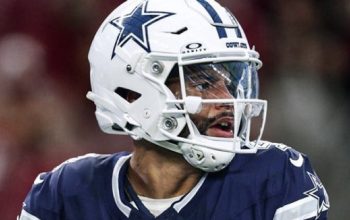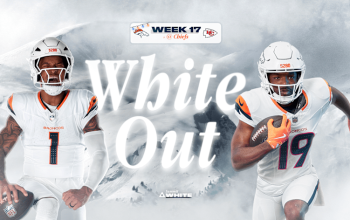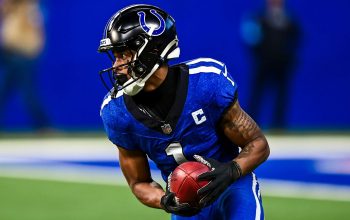The upcoming matchup between the Seattle Seahawks and the Denver Broncos in Super Bowl XLVIII provides a perfect opportunity to look back at a Seattle NFL franchise-in-waiting that never played a down—the Seattle Kings.
The Seattle Kings’ prospective ownership group embarked upon a sophisticated branding and marketing strategy in the early 1970s in their efforts to land an NFL expansion franchise.
The Kings set up offices near the site of today’s CenturyLink Field, a giant Kings football emblem perched high above. From this site the Seattle Kings aggressively lobbied for a team, even going so far as to commission NFL Properties to design team uniforms.
Some background—in the years following the National Football League’s merger with the upstart American Football League, plans were hatched to add two expansion franchises at some point between 1974 and 1977. Seattle was considered a likely candidate to land a team—the city was competing with Tampa, Memphis, and Phoenix. (Tampa was awarded a franchise first, in April 1974.)
Seattle had been angling for a berth in the NFL as early as 1958.
A group calling itself “Seattle Sea Lions Management Corp.” and led by Minnesota businessman Wayne Field was formed in February 1969 in attempt to land an NFL franchise. The name of the potential team was changed to “Kings” late in 1971. Multiple factors led to this decision, including the fact that a Seattle franchise would be playing at the King County Domed Stadium—eventually called the “Kingdome”—as well as the hiring of Washington Huskies football legend (and NFL Hall of Famer) Hugh “The King” McElhenny as Vice President and General Manager.
Rival ownership groups began to surface in 1972, but the Kings seemed to have the inside track in obtaining the franchise. The Kings’ promotional efforts were extensive as they positioned themselves as inevitable winners in the battle for the right to operate a new team in Seattle.
At one point the Kings brought in Ed Nixon, brother of President Richard M. Nixon, as a equity partner in their group. The organization even offered $1 million to the President to host his archives. Nixon resigned the presidency four months later and nothing came of the scheme.
On June 4, 1974, the NFL officially awarded a franchise to Seattle. The focus now shifted to which group would land the team.
Even as the Kings prospective ownership group committed hundreds of thousands of dollars a year to their efforts to land an NFL franchise, it soon became apparent that they were undercapitalized. The cost of the expansion team skyrocketed from what was speculated to be $10 million to the $16 million that the Seahawks group paid to enter the NFL.
Although this number seems laughably small by 2014 standards, it represented big money back then. When the Seahawks joined the NFL in 1976, their annual cut of national television revenue amounted to just $2 million—compare that to what will soon be a $150 million annual share per franchise.
The Kings threw in the towel in late October 1974. The franchise was awarded to a group called “Seattle Professional Football” and fronted by Lloyd W. Nordstrom of the Nordstrom fashion retailer family.
In December 1974, Herman Sarkowsky, managing director of the group, said “There are already too many Kings in professional sports.” The Seattle Kings would never take the field. Instead, the name “Seahawks” was selected after a contest contest which drew more than 20,000 entries and over 1,700 different names.
Finally, in 1976, the giant football that once adorned the Kings’ offices met an ignominious end—
Let’s project forward to 2014. The Seattle Kings are playing Denver for the right to hoist the coveted Vince Lombardi Trophy. They are a team ascendent, standing at the precipice of history. What would this team look like? We can only speculate, but I’d like to think that they would have rebranded at some point in the mid 1980s. Under pressure to differentiate themselves from the NHL’s Los Angeles Kings—another purple and gold Kings team—they opt for a silver, blue, and green color scheme. Then, as NFL revenues skyrocket in the 21st century, they opt for a clean, progressive look that reflects the dynamics of this new era. They focus on Seattle’s iconic Space Needle as the focal point of their new logo. Some people might even see a dollar sign in there, a subtle nod to the fact that the franchise that once cost a then-hefty $16 million is now valued at over $1 billion.



















